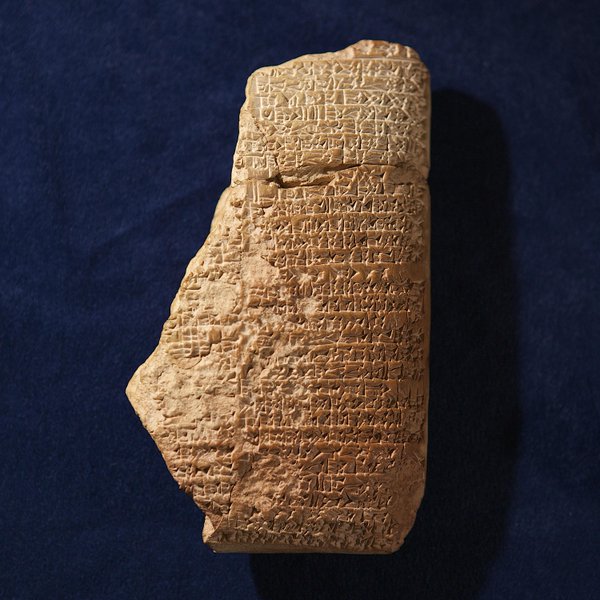
When you think of a college library archives what comes to mind? Old university records, maybe? Perhaps a couple of old books that you’ve never heard of? What about four thousand year old tablets that represent the beginnings of writing as we know it? That’s what’s hiding in DePaul’s library – well hiding might be too strong of word choice given that you can handle the tablets upon appointment.
Cuneiform tablets were used to track trade in ancient societies and according to scholars mark the beginning of the written language. In her piece “How Writing Came About” Denise Schmandt-Besserat explains the beginnings of writing has been dated back to
3100 B.C. originating in Mesopotamia. The tablets at DePaul, according to the archives, can be roughly dated to 2000 B.C. Due to some strange circumstances, which speaks levels to the strength of the Vincentian community, DePaul University inherited 94 tablets. Given the rarity of the pieces, and the fact that there are so few cuneiform scholars worldwide, DePaul doesn’t really have to resources to decode and study these pieces. So in effort to use the tablets for an educational purpose the special collections librarians allow students to get up and personal with these pieces of history.
During our time with the tablets I did what any other young adult in the 21st century would do – I posted it to social media. One of the first responses to this post was from my older sister. While her initial reaction was that of awe, her response quickly shifted to that of shock.
“WHY ON EARTH ARE THEY JUST LETTING YOU TOUCH THOSE?”
“WHAT PROTOCOL ARE YOU FOLLOWING!?”
“WHERE ARE YOUR GLOVES!?”
– Actual text messages from my sister
I think her reaction mirrored a lot of our own reactions when we got to interact with these pieces. It’s mind boggling that we as mere undergrads, most of whom had very little prior knowledge of cuneiform tablets, were allowed to handle these historical objects. She really got me thinking about the protocol that is in place at DePaul when it comes to these objects. Why is it that we are allowed to handle these tablets? Aren’t there concerns about compromising the integrity of the artifacts through this handling? And, of course, what is DePaul going to do with these tablets moving forward? As students we are lucky to be at a university that offers us such opportunities to interact with materials like this, but these concerns are just something I cannot shake.


I don’t know about the rest of you, but I felt like a real life Nicolas Cage when I was there (National Treasure Nic Cage). Or, better yet, that entire class was like being in Indiana Jones’ classroom. Like, here I am, holding this real thing in my hands. Something that has been around for centuries!!
I only wish that we had had the time to search for hidden treasure maps on the back… But joking aside, it was a lot of fun, and it really put history into perspective.
“BACK FROM YET ANOTHER GLOBETROTTING ADVENTURE, INDIANA JONES CHECKS HIS MAIL AND DISCOVERS THAT HIS BID FOR TENURE HAS BEEN DENIED.”
http://www.mcsweeneys.net/articles/back-from-yet-another-globetrotting-adventure-indiana-jones-checks-his-mail-and-discovers-that-his-bid-for-tenure-has-been-denied
I totally agree! As a history major I was freaking out about the idea that we were going to be getting our humanity, oils and such, all over these priceless artifacts. But, the uniqueness of our situation is such that we get to do just that. I really wish that there was a way to know more about what the tablets said because it feels like they hold the clue to some mysterious information. Even if its just how much you would tithe to Inanna at the end of the harvest season. There is so much more we could know!
The response from my friends was exactly the same. And quite frankly I did not really believe that we were going to be able to hold the tablets until the moment we picked them up. Those 20 minutes are one the top moments of my education. Period. I was planning on seeing the tablets, but I was blown away by the style guides for writing from 1535 and 1640. The 1535 version was mapped out much like a modern designer would map out a font they created. We were very fortunate as undergraduates to have to chance to handle so many different types of writing systems from such a range of time periods. From cuneiform to the librarian’s PowerPoint presentation. Also, St. Vincent DePaul’s own signature? Come on!